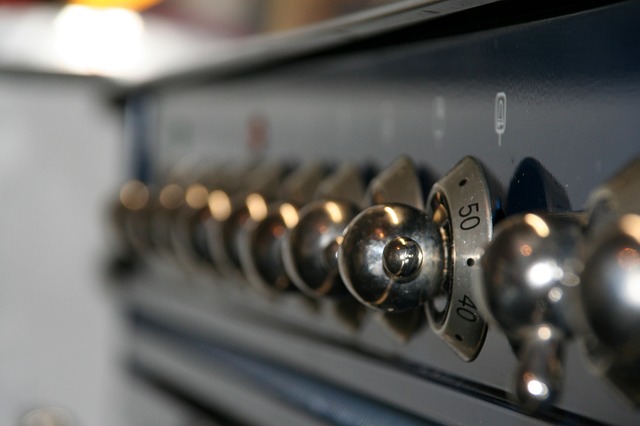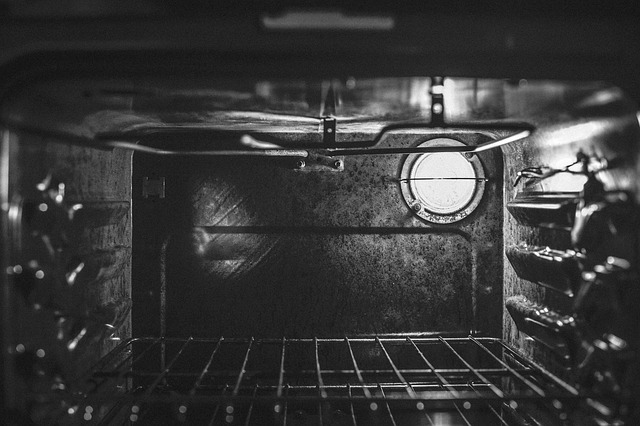
How to Clean an Oven – Green, Chemical or Lazy Solutions?
You may have a modern oven in your kitchen – probably a high-end appliance with a sleek design. However, this won’t stop it from getting dirty over a given period of operation. You will soon realise that a new oven can’t be new forever. It’s cleaning time and you are up to a serious decision – what method to use to get the desired results and preserve the good health of your family. Let’s go through all the available options and choose the most appropriate for your needs and schedule.
Basically, there are three ways to get the job done. First one is to use the self-cleaning cycle of your home oven – of course, if you are lucky enough to have that thing. If you don’t, or you simply don’t want to use it for some reason, the next logical choice is a standard store-bought oven cleaner. And, lastly, if you care for the environment (and for your own health, basically) you might want to explore the green alternatives.

Self-Cleaning Cycle
Most of the current units do utilise the method of cleaning through heating – especially if you’ve bought an expensive oven. And it’s getting very hot – 500°C is the standard temperature for the self-cleaning cycle. The whole process can last anywhere between two and four hours. During this time frame, most of the grime inside should turn into ash. This oven cleaning method saves you time and you avoid all that unpleasant scrubbing which is usually associated with cleaning the oven. The recommended frequency to use the self-cleaning cycle is once a week.
Everything may sound very comforting thus far, but there are still disadvantages. For instance, the high temperature might be destructive for the oven itself in the long term, the amount of power it takes to heat the oven to this temperature can cause a fuse or the entire control panel to blow. Also, there are lots of fumes coming out of the oven during the cycle, and these fumes can cause carbon monoxide build-up that leads to asthma and respiratory issues in people and can even kill pets. So, if you’re going to use the self-cleaning option every week, make sure there’s at least sufficient ventilation.
Chemical Solutions
Without a doubt, this is the most common choice for plenty of householders. In the supermarket, you can find all types of cleaners you can think of – children-safe, fume-free, heavy-duty. But if you read more about the ingredients blended in them, it’s easy to change your mind. The power of conventional cleaners derives from their toxic content. Usual components include (but are not limited to!) Butane, Sodium Hydroxide, Mono Ethanolamine, Diethylene Glycol Monobutyl Ether. You don’t have to be a Nobel prizewinner to understand how far we have gone in terms of unnatural cleaning. Most of these caustic elements expose human health to serious risk and can literally burn holes in your skin.
Of course, nowadays there are some products on the market that avoid using these ingredients and are said to be nature friendly and chemical-free. If you decide to use a product like that, you should look for labels like “organic”, “green” and “non-toxic”, as well as “solvent-free”, “biodegradable”, “petroleum-free”, “VOC-free” or “phosphate-free”. All these are considered safe even for babies.

The Green Way
More and more people nowadays realise the importance of Jean-Jacques Rousseau’s appeal: “back to nature”. And suddenly, it turns out there are many eco-friendly ways to have a clean oven. In fact, even professional companies, restaurants and food establishments already implement green procedures in their working routine. That doesn’t surprise anyone, as there’s a growing fan base of people who share numerous recipes for home-made oven cleaning solutions. Here are a few ways to clean your oven naturally:
1. The lazy baking soda and vinegar solution.
Get 1 cup of baking soda, 2 cups of white vinegar and an old spray bottle. Spread the baking soda inside your oven, pour the vinegar into the spray bottle, and spray the baking soda thoroughly. It will start fizzing and foaming because this is what happens when a base and an acid touch. Leave the oven like that overnight, or for at least a couple of hours, and then wipe the inside of the oven with a sponge and some water.
There should be hardly any scrubbing because the solution will eat through all the grease and burnt food particles. If you’d like, you can also add a few drops of lemon essential oil, to help to cut through the grease and provide a fresh smell. There are many ways you can use essential oils for cleaning.
2. A simple water and lemon solution.
Fill the baking dish with some water, then get a lemon, cut it in half and squeeze the juice into the water. You can also put the leftover peels in the tray. Then heat the oven to 250°C and bake this solution for about half an hour. This should loosen the dirt and make it easier to wipe the oven clean. The lemon also takes care of the unpleasant smells. It’s a great solution for anybody wondering how to clean a stove DIY.
3. Baking soda, liquid soap and salt.
This is the perfect natural oven cleaning solution, if your oven and all the details in it need a good scrubbing. Jut mix equal amounts of baking soda and salt, and add some liquid soap to create a paste. Use this paste and a sponge to wipe clean all the details, and you can apply the paste on the inside of the oven, leave it for a while to soak, and then scrub everything clean. Salt can also be used to deal with spills immediately. If you pour some salt onto a spill, you will prevent it from drying and getting stuck to the surface for good.
Have you ever tried any of these natural oven cleaning solutions yourself?
- Five Changes to Apply to Your House Before Selling It - June 28, 2022
- How to clean and organise your summer house - January 27, 2022
- How Often Should Pest Control Visit Your Home? - January 13, 2022





